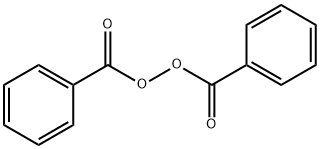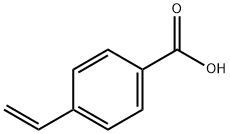Divinylbenzene
Synonym(s):Diethenylbenzene;Divinylbenzene;DVB;DVB HP;Vinylstyrene
- CAS NO.:1321-74-0
- Empirical Formula: C10H10
- Molecular Weight: 130.19
- MDL number: MFCD01778656
- EINECS: 215-325-5
- SAFETY DATA SHEET (SDS)
- Update Date: 2024-12-18 14:08:52

What is Divinylbenzene?
Description
DVB exists as o-, m-, and p-isomers. The commercial product contains all 3 isomers, but m-isomer predominates. Usually contains an inhibitor to preventpolymerization. The CAS number for the mixed isomersappears on most regulatory lists.DVB is a pale, straw-colored liquid. Molecularweight= 130.20; Specific gravity (H2O:1) 5 0.93; Boilingpoint= 195-200℃; Freezing/Melting point = 2 66.7to 252℃; Vapor pressure= 0.7 mmHg at 20℃; Flashpoint= 62℃ (cc); 76℃ (oc); Autoignition temperature=469℃. Explosive limits: LEL = 0.7%; UEL= 6.2%.Hazard Identification (based on NFPA-704 M RatingSystem): Health 1, Flammability 2, Reactivity 2. Insolublein water.
Chemical properties
A water-white to straw colored liquid. Slightly less dense than water and insoluble in water. Flash point below 141°F. Vapors may be toxic. Used in making rubber.
The Uses of Divinylbenzene
Divinylbenzene is used as a reactive monomer in polyester resins and for the synthesis of highly crosslinked macroporous styrene as well as a crosslinking agent. It acts as an intermediate in the production of ion exchange resin. Further, it is used in making rubber, petroleum production and polymeric core shell nanoparticles. In addition, it is used to synthesize monodispersed poly divinylbenzene microspheres.
The Uses of Divinylbenzene
Divinylbenzene is a specialty monomer used primarily to make cross-linked polystyrene resins. The largest use of divinylbenzene (DVB) [CAS: 1321-74-0] is in ion-exchange resins for domestic and industrial water softening. Ion-exchange resins are also used as solid acid catalysts for certain reactions, such as esterification. Divinylbenzene is manufactured by dehydrogenation of diethylbenzene, which is an internal product in the alkylation plant for ethylbenzene production.
The Uses of Divinylbenzene
Comonomer for preparation of crosslinked polymers in production of ion exchange beads and gel permeation chromatography polystyrene beads; polymerization monomer for synthetic rubber, drying oils, and casting resins
Definition
ChEBI: 1,2-Divinylbenzene is a member of styrenes.
General Description
Divinylbenzene (DVB) consists of a combination of meta and para isomers of DVB and ethylvinylbenzene. It can be used as a monomer for the preparation of linear polydivinylbenzene by anionic polymerization.
Air & Water Reactions
Flammable. Insoluble in water.
Reactivity Profile
Divinylbenzene may react vigorously with strong oxidizing agents. Can react exothermically with reducing agents (such as alkali metals and hydrides) to release gaseous hydrogen. May react exothermically with both acids and bases. May in the presence of various catalysts (such as acids) or initiators undergo exothermic polymerization. Inhibited by presence of an additive. When uninhibited violent polymerization may occur . Substitution at the benzene nucleus occurs by halogenation (acid catalyst), nitration, sulfonation, and the Friedel-Crafts reaction.
Health Hazard
Divinyl benzene is an irritant of
eyes, nose, and mucous membranes.
Mild respiratory irritation occurred in
workers exposed to 0.4–4ppm divinyl
benzene. Mild irritation was also reported
from skin and eye contact.
Fire Hazard
Divinylbenzene is combustible.
Flammability and Explosibility
Not classified
Safety Profile
Mildly toxic by ingestion. An eye irritant. Combustible. When heated to decomposition it emits acrid smoke and irritating fumes.
Potential Exposure
Tumorigen,Mutagen. This compound is used as a monomer for thepreparation of special synthetic rubbers, drying oils, ionexchange resins and casting resins, and in polyester resinmanufacture
First aid
If this chemical gets into the eyes, remove anycontact lenses at once and irrigate immediately for at least15 min, occasionally lifting upper and lower lids. Seek medical attention immediately. If this chemical contacts theskin, remove contaminated clothing and wash immediatelywith soap and water. Seek medical attention immediately. Ifthis chemical has been inhaled, remove from exposure,begin rescue breathing (using universal precautions, including resuscitation mask) if breathing has stopped and CPR ifheart action has stopped. Transfer promptly to a medicalfacility. When this chemical has been swallowed, get medical attention. Give large quantities of water and inducevomiting. Do not make an unconscious person vomit.
Carcinogenicity
Divinyl benzene was weakly genotoxic in
vivo, inducing a dose-dependent increase in
sister chromatid exchanges and an increase
in the frequency of chromosome aberrations in
male mice exposed at concentrations of up to
75ppm for 3 days.
The 2003 ACGIH threshold limit valuetime-
weighted average (TLV-TWA) for divinyl
benzene is 10ppm (53mg/m3).
storage
Color Code—Red: Flammability Hazard: Store ina flammable liquid storage area or approved cabinet awayfrom ignition sources and corrosive and reactive materials.Prior to working with DVB you should be trained on itsproper handling and storage. Before entering confined spacewhere this chemical may be present, check to make sure thatan explosive concentration does not exist. Store in tightlyclosed containers in a cool, well-ventilated area away frommetallic salts (such as ferric and aluminum chlorides) andoxidizers (such as perchlorates, peroxides, permanganates,chlorates, and nitrates). Store in tightly closed containers ina cool, well-ventilated area away from heat. Sources of ignition, such as smoking and open flames, are prohibited wherethis chemical is used, handled, or stored in a manner thatcould create a potential fire or explosion hazard. Metal containers involving the transfer of 5 gallons or more of thischemical should be grounded and bonded. Drums must beequipped with self-closing valves, pressure vacuum bungs,and flame arresters. Use only nonsparking tools and equipment, especially when opening and closing containers ofthis chemical.
Shipping
Diethylbenzene requires a shipping label of“FLAMMABLE LIQUID.” It falls in Hazard Class 3 andPacking Group II
Purification Methods
Purify divinylbenzene by dissolving in Et2O, shaking with H2O, drying over CaCl2, filtering, evaporating and distilling in vacuo. It polymerises within 2-3days unless 4-tertbutylcatechol (0.05%) is added as stabilizer. [Fries & Bestian Chem Ber 69 715 1936, Beilstein 5 III 1366.]
Incompatibilities
Forms explosive mixture with air.Violent reaction with strong oxidizers, metallic salts. Ableto polymerize; add inhibitor and monitor to insure effectivelevels are maintained at all times. May accumulate staticelectrical charges, and may cause ignition of its vapors.
Properties of Divinylbenzene
| Melting point: | -87.1°C |
| Boiling point: | 195 °C(lit.) |
| Density | 0.919 g/mL at 20 °C |
| vapor density | 4.5 (vs air) |
| vapor pressure | 0.9 mm Hg ( 30 °C) |
| refractive index | n |
| Flash point: | 148 °F |
| storage temp. | Store at +2°C to +8°C. |
| solubility | 5mg/l |
| form | Liquid |
| color | Colorless to pale yellow |
| Specific Gravity | 0.914 |
| explosive limit | 1.1-6.2%(V) |
| Water Solubility | Miscible with ethanol and ether. Immiscible with water. |
| FreezingPoint | -87℃ |
| Sensitive | Light Sensitive |
| Stability: | Stable in the presence of added inhibitor, but may polymerize in the absence of inhibitor. Light and heat sensitive. Incompatible with heavy metal salts, oxidizing agents, acids. |
| CAS DataBase Reference | 1321-74-0(CAS DataBase Reference) |
| EPA Substance Registry System | Divinylbenzene (1321-74-0) |
Safety information for Divinylbenzene
| Signal word | Warning |
| Pictogram(s) |
 Exclamation Mark Irritant GHS07  Environment GHS09 |
| GHS Hazard Statements |
H315:Skin corrosion/irritation H319:Serious eye damage/eye irritation H411:Hazardous to the aquatic environment, long-term hazard |
| Precautionary Statement Codes |
P264:Wash hands thoroughly after handling. P264:Wash skin thouroughly after handling. P273:Avoid release to the environment. P280:Wear protective gloves/protective clothing/eye protection/face protection. P302+P352:IF ON SKIN: wash with plenty of soap and water. P305+P351+P338:IF IN EYES: Rinse cautiously with water for several minutes. Remove contact lenses, if present and easy to do. Continuerinsing. P332+P313:IF SKIN irritation occurs: Get medical advice/attention. |
Computed Descriptors for Divinylbenzene
| InChIKey | YARNEMCKJLFQHG-UHFFFAOYSA-N |
New Products
Tert-butyl bis(2-chloroethyl)carbamate 4-Methylphenylacetic acid N-Boc-D-alaninol N-BOC-D/L-ALANINOL N-octanoyl benzotriazole 3-Morpholino-1-(4-nitrophenyl)-5,6-dihydropyridin- 2(1H)-one Furan-2,5-Dicarboxylic Acid DIETHYL AMINOMALONATE HYDROCHLORIDE 1,1’-CARBONYLDIIMIDAZOLE R-2-BENZYLOXY PROPIONIC ACID 1,1’-CARBONYLDI (1,2-4 TRIAZOLE) N-METHYL INDAZOLE-3-CARBOXYLIC ACID (2-Hydroxyphenyl)acetonitrile 4-Bromopyrazole 5-BROMO-2CYANO PYRIDINE 5,6-Dimethoxyindanone 5-broMo-2-chloro-N-cyclopentylpyriMidin-4-aMine 2-(Cyanocyclohexyl)acetic acid 4-methoxy-3,5-dinitropyridine 1-(4-(aminomethyl)benzyl)urea hydrochloride 2-aminopropyl benzoate hydrochloride diethyl 2-(2-((tertbutoxycarbonyl)amino) ethyl)malonate tert-butyl 4- (ureidomethyl)benzylcarbamate Ethyl-2-chloro((4-methoxyphenyl)hydrazono)acetateRelated products of tetrahydrofuran








You may like
-
 Divinylbenzene, Mixture of isomers, Stabilized with 1000ppm 4-tert-butylcatechol CAS 1321-74-0View Details
Divinylbenzene, Mixture of isomers, Stabilized with 1000ppm 4-tert-butylcatechol CAS 1321-74-0View Details
1321-74-0 -
 Divinylbenzene, Mixture of isomers, Stabilized with 1000ppm 4-tert-butylcatechol CAS 1321-74-0View Details
Divinylbenzene, Mixture of isomers, Stabilized with 1000ppm 4-tert-butylcatechol CAS 1321-74-0View Details
1321-74-0 -
 Divinylbenzene, Mixture of isomers, Stabilized with 1000ppm 4-tert-butylcatechol CAS 1321-74-0View Details
Divinylbenzene, Mixture of isomers, Stabilized with 1000ppm 4-tert-butylcatechol CAS 1321-74-0View Details
1321-74-0 -
 Divinylbenzene, Mixture of isomers, Stabilized with 1000ppm 4-tert-butylcatechol CAS 1321-74-0View Details
Divinylbenzene, Mixture of isomers, Stabilized with 1000ppm 4-tert-butylcatechol CAS 1321-74-0View Details
1321-74-0 -
 Divinylbenzene, Mixture of isomers, Stabilized with 1000ppm 4-tert-butylcatechol CAS 1321-74-0View Details
Divinylbenzene, Mixture of isomers, Stabilized with 1000ppm 4-tert-butylcatechol CAS 1321-74-0View Details
1321-74-0 -
 Divinylbenzene, Mixture of isomers, Stabilized with 1000ppm 4-tert-butylcatechol CAS 1321-74-0View Details
Divinylbenzene, Mixture of isomers, Stabilized with 1000ppm 4-tert-butylcatechol CAS 1321-74-0View Details
1321-74-0 -
 Divinylbenzene, 80% CAS 1321-74-0View Details
Divinylbenzene, 80% CAS 1321-74-0View Details
1321-74-0 -
 Divinylbenzene, 63% CAS 1321-74-0View Details
Divinylbenzene, 63% CAS 1321-74-0View Details
1321-74-0